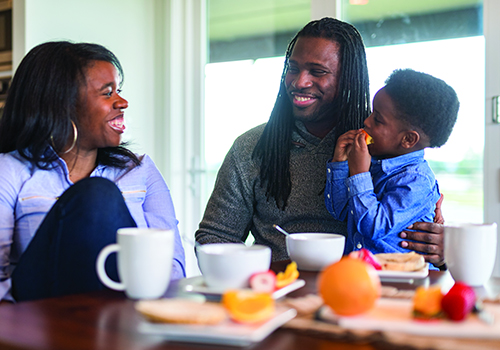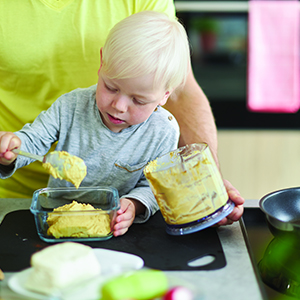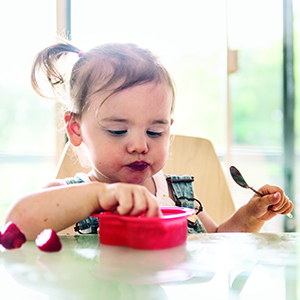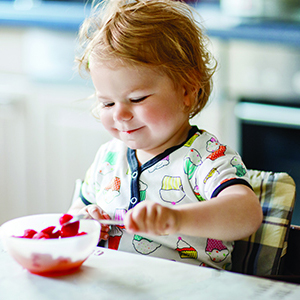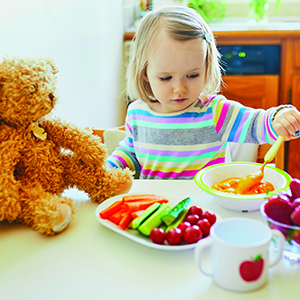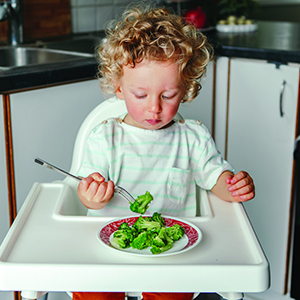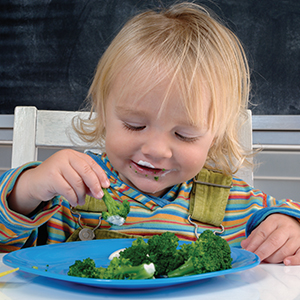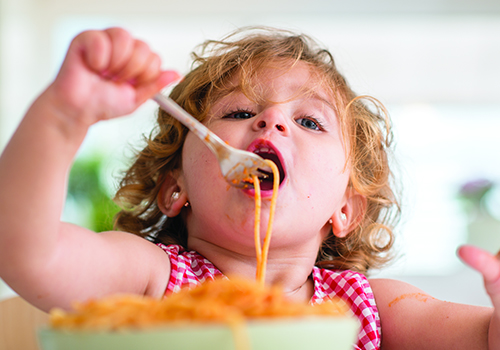”We’ve hit the ‘terrible twos,” Angela sighed, “and Nicolas is only 18 months old. He doesn’t want to brush his teeth, he gets frustrated putting his own shoes on, and he won’t eat what I want him to!” Like many toddlers, Nicolas, who used to eat happily from a spoon with mom’s help, wants to do everything his way—and he’s getting more picky!
Welcome to the “terrific two’s”, a time when your child gets mad when they can’t do it all by themselves but doesn’t want your help, either. Research shows that when families eat together, children tend to be happier, eat a wider variety of foods and gain weight at a healthier rate. But when your child throws everything ‘good for them’ on the floor, or only wants applesauce pouches, making meals and eating together may feel like more trouble than it’s worth.
